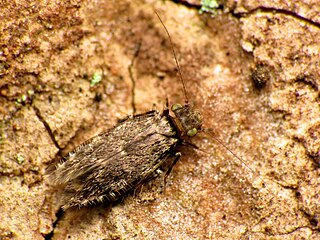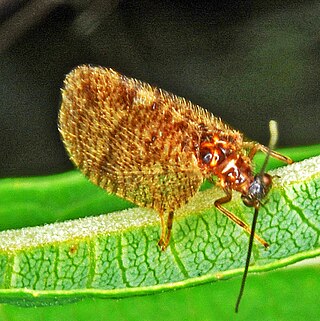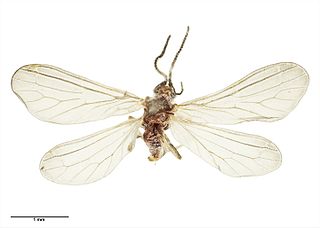
Palaemonidae is a family of shrimp in the order Decapoda. Many species are carnivores that eat small invertebrates, and can be found in any aquatic habitat except the deep sea. One significant genus is Macrobrachium, which contains commercially fished species. Others inhabit coral reefs, where they associate with certain invertebrates, such as sponges, cnidarians, mollusks, and echinoderms, as cleaner shrimps, parasites, or commensals. They generally feed on detritus, though some are carnivores and hunt tiny animals.

Triplophysa is a genus of fish in the family Nemacheilidae found mainly in and around the Qinghai-Tibet Plateau in China, as well as inland waters of the larger part of central Asia. They can be distinguished from other genera of Nemacheilidae by marked sexual dimorphism, including the development of nuptial tubercles on breeding males. Currently, the genus is a mixed assemblage of species. Some lineages have been identified and treated as subgenera, but as Wikipedia follows Fishbase for fish species all but Hedinichthys have been treated as subgenera in Wikipedia, although Kottelat in his revision of the loaches did recognise them as valid. FishBase, however, includes these in Triplophysa without specifying subgenera and treats the names given by Kottelat as synonyms.

The dustywings, Coniopterygidae, are a family of Pterygota of the net-winged insect order (Neuroptera). About 460 living species are known. These tiny insects can usually be determined to genus with a hand lens according to their wing venation, but to distinguish species, examination of the genitals by microscope is usually necessary.

Alderflies are megalopteran insects of the family Sialidae. They are closely related to the dobsonflies and fishflies as well as to the prehistoric Euchauliodidae. All living alderflies – about 66 species all together – are part of the subfamily Sialinae, which contains nine extant genera.

Leptoconops is a midge genus in the family Ceratopogonidae. It has a mostly tropical or subtropical distribution worldwide, but some species occur as far north as Moscow region in Russia and the Yukon Territory in Canada.

Chrysoperla is a genus of common green lacewings in the neuropteran family Chrysopidae. Therein they belong to the Chrysopini, the largest tribe of subfamily Chrysopinae. Their larvae are predatory and feed on aphids, and members of this genus have been used in biological pest control.

Chrysopinae is the nominate subfamily of green lacewings in the insect family Chrysopidae in the order Neuroptera. This subfamily is also the largest within the family and comprises about 60 genera.

Perleidiformes are an extinct order of prehistoric ray-finned fish from the Triassic period Although numerous Triassic taxa have been referred to Perleidiformes, which ones should be included for it to form a monophyletic group is a matter of ongoing scientific debate.
Neoconis is a genus of lacewing.

Sympherobius is a genus of brown lacewings in the family Hemerobiidae. There are at least 50 described species in Sympherobius.

Chrysopini is a tribe of green lacewings in the family Chrysopidae. There are about 32 genera and 926 described species in Chrysopini.

Echmepteryx is a genus of scaly-winged barklice in the family Lepidopsocidae. There are more than 80 described species in Echmepteryx.

Megalomus is a genus of brown lacewings in the family Hemerobiidae. There are more than 40 described species in Megalomus.

Apertochrysa is a genus of green lacewings in the family Chrysopidae. There are 183 described species in the genus.

Mesopsocus is a genus of middle barklice in the family Mesopsocidae. There are more than 60 described species in Mesopsocus.

Psococerastis is a genus of insects belonging to the family Psocidae.

Cryptoscenea is a genus of lacewings belonging to the family Coniopterygidae.
















